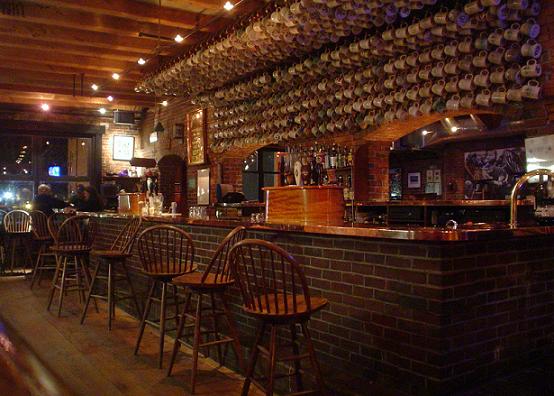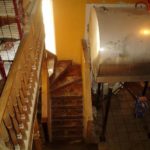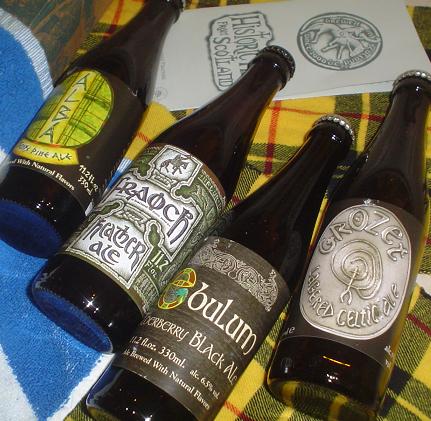Last July, I wrote a review of Pete Brown’s book Man Walks into a Pub. Over 7 weeks later, A reply was posted by Martyn Cornell:
I had better declare a massive interest before I begin, since I’m the author of Beer: The Story of the Pint, which came out two months after Pete Brown’s book. I’ve met Pete, he’s a nice guy, and his book contains, in its second half, an excellent analysis of where the brewing industry in Britain is today. It’s a pity the first half does not seem to have had as much research put into it, as it repeats all the old myths about the history of beer my own book attempts to correct – myths which add up to rather more than “a few” factual errors. I wouldn’t ask you to take my word for it – read both books, and let me know what you think.
Before I knew it I shelled out 18.92 Euros through amazon.co.uk and a few weeks ago the book arrived. Paying the $2.20 or so for GST [and the most cursed $5.00 more for the Canada Post GST collection charge – a money grab worthy of Aliant] I ran right home and started into the read.
Now, I have over 30 books about beer. Some are style guides about the history of and how to make, say, Stout or German Wheat Ale. Others are technical works like the ever popular The Biotechnology of Malting and Brewing by J.S Hough (1985, Cambridge)while others are layperson homebrewing guides like the classic 1970’s The Big Book of Brewing by David Line (12th ed, 1985, Amateur Winemaker). Some, like Beer: The Story of the Pint are histories of the phenomena of beer drinking and the brewing industry. I have three or four of these now which focus on the history of the English industry:
Beer and Britannia: An Inebriated History of Britain by Peter Haydon (2001, Sutton)
Beer: The Story of the Pint by Martyn Cornell (2003, Headline)
Man Walks into a Pub by Pete Brown (2003, MacMillan) and
The English Pub by Michael Jackson (1976, Harper & Row).
The latter text is the ish-ish one as it is largely a photo essay on the elements of the pub but it contains as much historical information as any so I include it here. So where does the most recent text fall in?
Lets just say from the outset that I am biased myself as I will buy any book about beer and find something useful in it. In that sense I am speaking as a a collector more than as a book reviewer. Further, I was particularly pleased to be contacted by the author and even more pleased by a continuing email correspondence we have shared. At one point in my reading, I wrote to say that I was somewhat frustrated by the lack of footnoting, to which Mr Cornell replied:
Mmmmm – trouble is, the general feeling in the publishing world is that footnotes equal elitist-looking equals lost sales, except if they’re jokey asides as per Pete Brown’s book. This may be wrong, but it’s what publishers think. The aim of Beer: TSOTP was to try to appeal both to people, like yourself, who already knew a lot about beer and brewing, and also to people looking for a Christmas present for Uncle Ernie (since by getting them to buy the book, I and the publisher make more money …), hence no footnotes so as not to put off the Uncle Ernie crowd. However, to make up for this a little, I tried to make the bibliography as complete as possible, and also chapter-specific, to help people track references down.
Cheers, Martyn Cornell
He is, of course, right…and even knows I have an Uncle Ernie, who lives in the Scottish Borders (blessedly near Traquair House) and who would, indeed, like these books for Christmas. The bibliography provided by Mr. Cornell is extensive, running 14 pages, and wil add muchly to my hunt for more books to buy.
That all being said, it was the first half of the book I enjoyed the most – the history of brewing to very roughly 1850. The latter part I found became a recitation of corporate mergers in the English brewing industry. In the first part a compelling argument concerning the history of porter is set out, the meaning of the XX and KK system described and the pre-1500 story set out more clearly and supported by more extensive research than in any other book I have read. He is, however and for example, lighter on the place of mild from 1850 to 1950 than the others, yet does the best job in explaining Burton. They all, however, miss the best reference to that latter strong ale in Wind in the Willows when Rat and Mole in the chapter “Dulce Domum” discover it in Mole’s old pantry as they prepare a winter night’s feed:
The Rat, meanwhile, was busy examining the lable on one of the beer-bottles. “I perceive this to be Old Burton,’ he remarked approvingly. “Sensible Mole! The very thing! Now we shall be able to mull some ale! Get the things ready, Mole, while I draw the corks.”
Old Burton can be enjoyed in Ontario every winter with the supply of Samuel Smith’s “Winter Welcome” or Young’s “Winter Warmer”, the latter renamed as such in 1971 from the previous “Burton Ale”, as we learn on page 206 of Cornell.
When I compare Cornell’s work to that of Haydon, I find the latter has the better description of 1800 to 1950. Similarly when I add Brown to the mix, he has the best explanation of 1950 to now. What Haydon and Brown achieve is contextualizing the place of beer in English society during those periods, the former in terms of the political and regulatory overlay, the latter in terms of consumerism and marketing. Cornell’s success is setting the greater social context better than the others before 1800 and especially before 1500. My verdict? Buy all of them – and find an old coffee table sized copy of Jacksons The English Pub for more illustrations. Each will add to the others both in terms of the overall timeline and interpretation of particular facts.



























